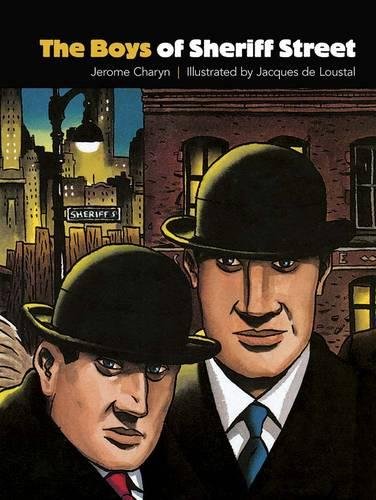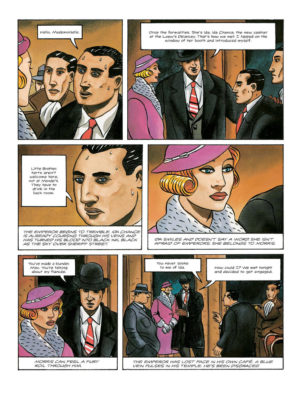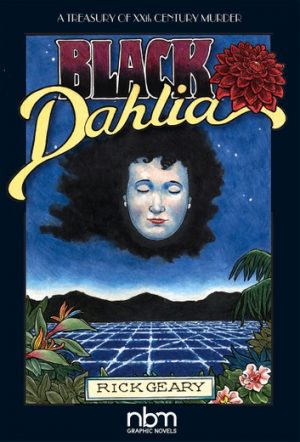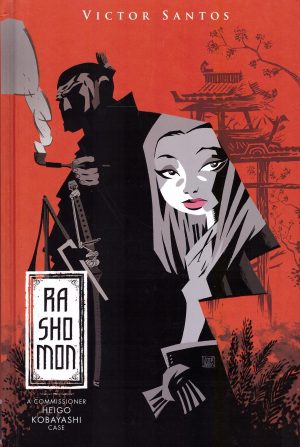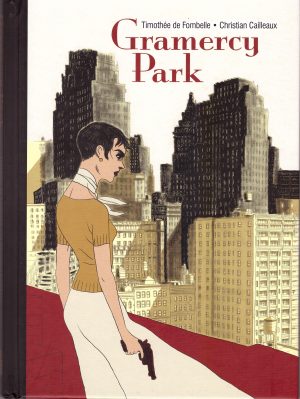Review by Frank Plowright
Max and Morris Adamov are twin gangsters who base themselves in Mendel’s Café on Sheriff Street, just below the Williamsburg Bridge in the post-prohibition New York of the 1930s. Morris is handsome and popular, but the hunchbacked Max altogether more awkward, especially in the presence of women. Everything changes when Morris walks into Mendel’s one night with his new fiancée Ida Chance whose brittle beauty immediately captivates everyone, most fatally Max.
What attracted writer Jerome Charyn to the art of Jacques de Loustal was a lack of concern about movement in comics, flying in the face of an art that thrives on it. For de Loustal panels are individual, almost a glimpse onto a set, with performers captured still and frozen in time, and as much as possible Charyn’s narrative is in the form of captions describing a mood, short, clipped and to the point. He chooses the words carefully, contracting the accompanying dialogue to the absolutely essential, and the combined effect is an unfolding tragedy with the obsessed Max cast as fevered villain. De Loustal draws him as uncomfortably as possible, stunted, squirming and sweating as he struggles to suppress his passion for his brother’s girl. Ida only speaks in three scenes, yet as pictured by de Loustal entrances every man that sees her. Be they lumpy or angular, every other person has personality, as does his New York, a flat accumulation of tower blocks, water towers, warehouses and bridges, with a step down to the art deco of Miami a complete contrast.
Before Ida, Max was in control, but what’s beautifully ambiguous is whether her presence inspires Max to concoct a territorial expansion to impress her or to engineer other circumstances, or at least increase the odds of them. Max’s confusion and lashing out is finely constructed, but the greatest emotional moment occurs in a late scene where Ida responds to a question with a transparent lie and a further hell is constructed.
It’s dressed up as a crime story, but that’s just the backdrop. What raises The Boys of Sheriff Street above genre fiction is the carefully cultivated sense of inevitability, with the flatness of the leading characters not only artistic. They’re archetypes, with Charyn pulling their strings. This is fine as far as Ida and Max are concerned, but too many others are like Guys and Dolls extras delivering their line and departing, although equally their role is only as bit players to engineer Max’s responses. Despite minor misgivings, Charyn and de Loustal’s unique approach results in a memorable steamy graphic novel.
